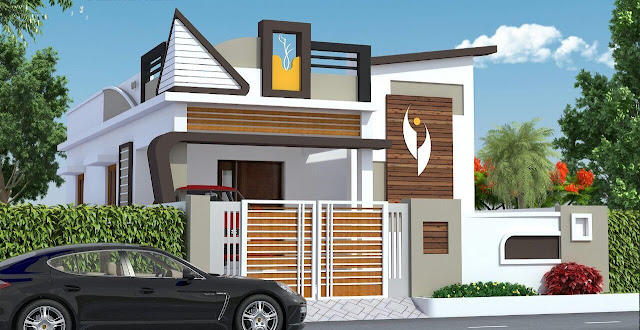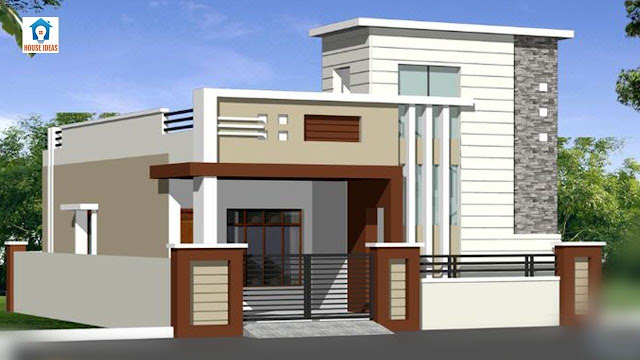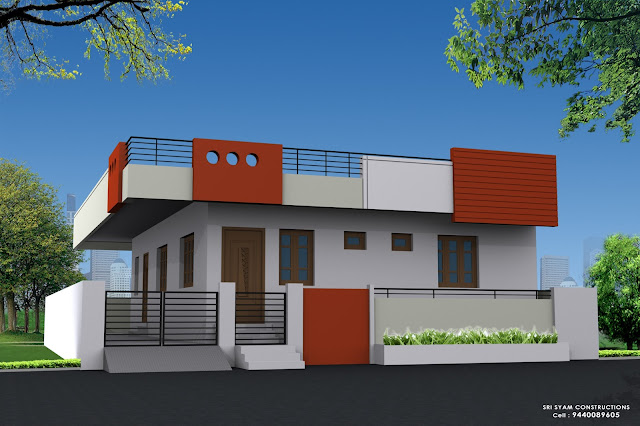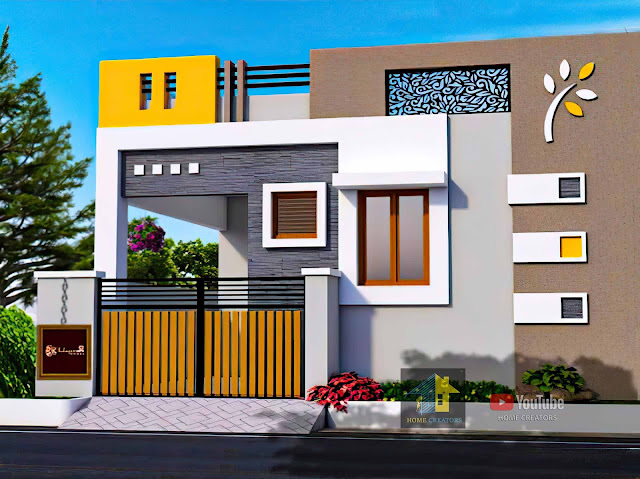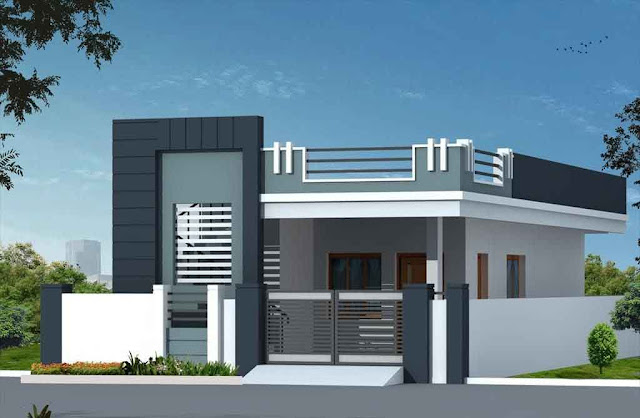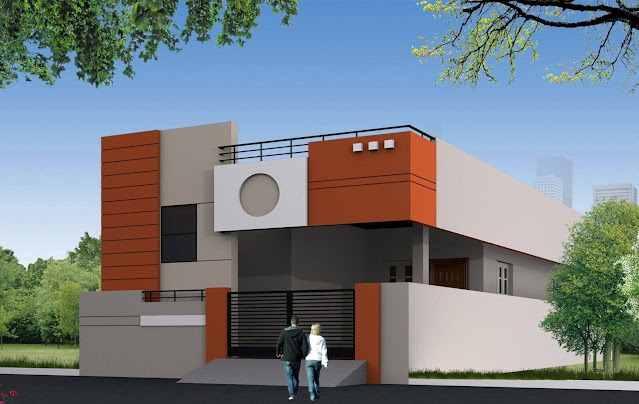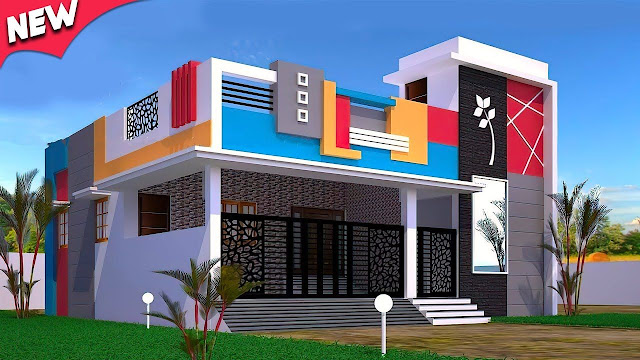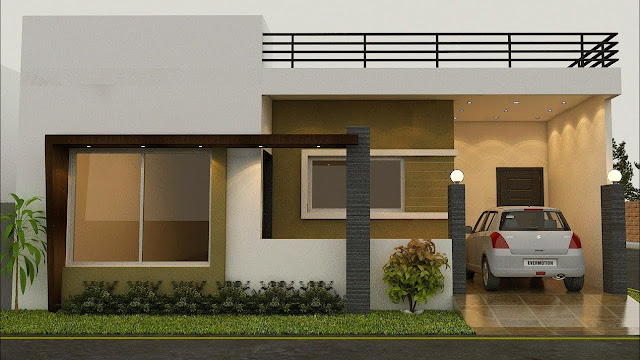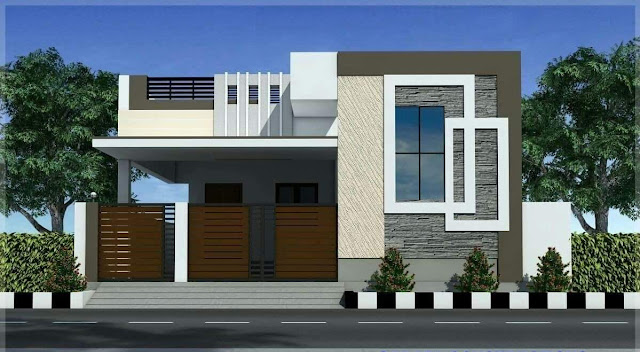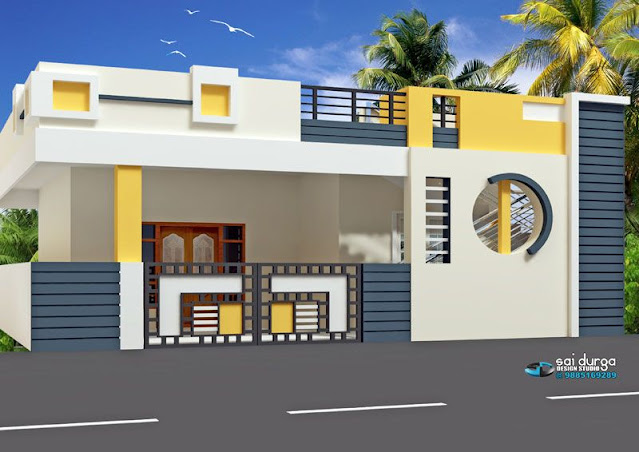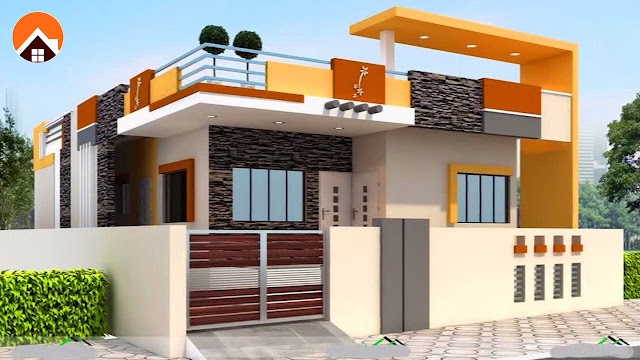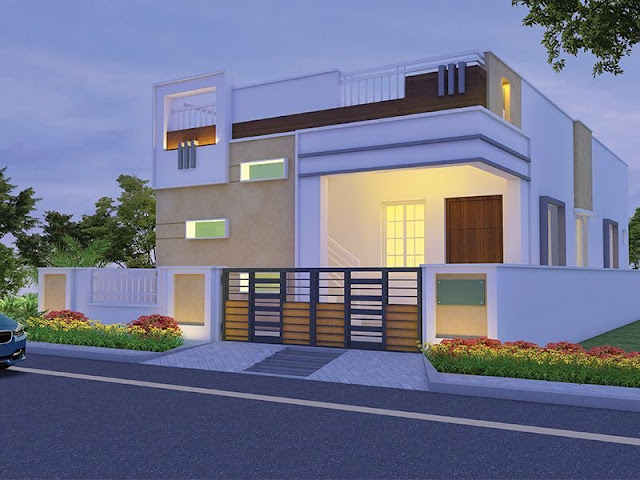The front elevation design of a single-floor home plays a vital role in creating a lasting impression and enhancing the overall aesthetic appeal of a residential property. It is the first thing that catches the eye and sets the tone for what lies beyond. A well-crafted front elevation design not only showcases the individuality and style of the homeowner but also adds value to the property.
The concept of front elevation design revolves around the exterior appearance and presentation of a house. It encompasses various elements such as the layout, color scheme, architectural features, materials used, and overall symmetry. The primary objective is to create a visually captivating and harmonious facade that seamlessly blends with the surrounding environment.
When it comes to single-floor homes, the front elevation design becomes even more significant. With the absence of additional floors, the entire architectural statement is concentrated within a single plane. This offers a unique opportunity to focus on the finer details, highlighting specific features and incorporating captivating design elements.
Front Elevation Design Single Floor
Here are some pictures of the front elevation design single floor that you can use as inspiration:
Tips for Front Elevation Design on a Single Floor
In this article, we will explore some valuable tips to help you create an impressive front elevation design for a single-floor house.
1. Understanding Front Elevation Design
Front elevation design involves the visual representation of the building's facade. It combines aesthetics, functionality, and architectural principles to create an attractive and inviting look. The design should complement the interior layout, showcase the architectural style, and harmonize with the surroundings.
2. Choosing the Right Architectural Style
Selecting an architectural style that suits your preferences and the overall character of the neighborhood is essential. Whether you prefer a modern, traditional, contemporary, or minimalist design, the architectural style should be cohesive and visually appealing.
3. Emphasizing Symmetry and Balance
Achieving symmetry and balance in the front elevation design enhances its visual appeal. Balancing the placement of windows, doors, and other architectural elements creates a sense of harmony and order. See also: village single floor home front design.
4. Incorporating Suitable Materials
Choosing the right materials for the front elevation is crucial for durability and aesthetics. Consider the climate, maintenance requirements, and architectural style when selecting materials such as brick, stone, wood, stucco, or siding.
5. Paying Attention to Color and Texture
Color and texture play a significant role in enhancing the overall look of the front elevation. Consider the existing color palette in the neighborhood and select colors that complement the architectural style. Incorporating textures, such as using different materials or patterns, adds depth and visual interest.
6. Adding Architectural Elements
Incorporating architectural elements like columns, arches, cornices, and moldings adds character and elegance to the front elevation. These elements help create focal points and define the overall style of the house.
7. Enhancing the Entrance
The entrance is the focal point of the front elevation and should be designed to make a statement. Consider using a grand door, decorative lighting, and unique features like an overhang or porch to create an inviting entrance.
8. Utilizing Landscaping for Curb Appeal
Landscaping plays a vital role in enhancing the curb appeal of the front elevation. Strategically placed plants, trees, shrubs, and flowers can soften the look of the facade and add natural beauty to the design.
9. Focusing on Lighting
Well-planned lighting can dramatically enhance the front elevation design. Consider using a combination of ambient, accent, and task lighting to highlight architectural features, illuminate pathways, and create a warm and welcoming ambiance.
10. Balancing Privacy and Openness
Finding the right balance between privacy and openness is crucial when designing the front elevation. Consider the orientation of the house, the placement of windows, and the use of screening elements to ensure privacy without compromising natural light and ventilation.
11. Harmonizing with the Surroundings
The front elevation should harmonize with the surroundings, taking inspiration from the natural landscape, neighboring houses, and the overall streetscape. Creating a cohesive look ensures that the house blends seamlessly into its environment.
12. Incorporating Sustainable Design Features
Sustainable design features not only reduce the environmental impact but also add value to the front elevation design. Consider incorporating energy-efficient windows, solar panels, rainwater harvesting systems, and green roofs to make your home more sustainable.
13. Budget Considerations
While designing the front elevation, it is essential to consider your budget. Set realistic expectations and prioritize the elements that align with your vision and financial capacity. It is possible to achieve an impressive front elevation design within various budget ranges.
Conclusion
The front elevation design of a single-floor house is an opportunity to showcase your style and create a memorable first impression. By following these tips, you can create a visually stunning front elevation that reflects your personality, harmonizes with the surroundings, and stands the test of time.
FAQs
How do you choose a front elevation?
When choosing a front elevation for your home, consider factors such as architectural style, personal preference, budget, and the overall aesthetics of the neighborhood. It's important to select a design that complements the rest of the house and reflects your individual taste.
What are the different types of home front elevations?
There are several types of home front elevations, including traditional, modern, contemporary, colonial, Victorian, Mediterranean, ranch, and craftsman. Each style has its unique features, materials, and architectural elements that define its overall look and appeal.
How do you create an elevation design?
To create an elevation design, start by assessing the architectural style and requirements of your home. Consider the placement of doors, windows, rooflines, and any distinctive features you want to highlight. Then, use software or hand-drawing techniques to sketch the design, incorporating details such as textures, materials, and colors.
What are the different types of exterior elevations?
The different types of exterior elevations typically include front elevation, side elevation, and rear elevation. These elevations provide a visual representation of how the building looks from different angles and help convey important architectural information.
What is a front elevation floor plan?
A front elevation floor plan is a drawing or diagram that shows the vertical representation of the front exterior of a building, including its structural elements, doors, windows, and other architectural features. It helps visualize the overall look and design of the front of the building.
How do you draw a front elevation from a floor plan?
To draw a front elevation from a floor plan, you would typically start by using the floor plan as a reference. Then, translate the measurements and proportions onto a separate drawing or computer software. Pay attention to vertical heights, angles, and the placement of doors and windows to accurately represent the front view.
How do I choose elevation tiles?
When choosing elevation tiles, consider the architectural style of your home, the color scheme, and the overall design aesthetic. Look for tiles that complement the materials used in the construction of your home and create a cohesive and visually appealing look for the exterior.
What is the importance of front elevation?
The front elevation of a building plays a crucial role in creating the first impression and curb appeal. It sets the tone for the overall design, reflects the architectural style, and communicates the character and personality of the home. A well-designed front elevation enhances the visual appeal and value of the property.
How do you choose elevation colors?
When choosing elevation colors, consider the architectural style, the surrounding environment, and your personal preferences. Take into account the color of the roofing, doors, and windows, and select colors that harmonize with the overall design. Additionally, consider the neighborhood's aesthetic and any local regulations or guidelines.
What is an example of a front elevation?
An example of a front elevation could be a two-story house with a symmetrical design, featuring a central front entrance flanked by windows on either side. The exterior might showcase a combination of brick and siding, with a gable roof and a porch supported by columns. This is just one possible example, as front elevations can vary greatly depending on architectural styles and individual preferences.
In conclusion, designing the front elevation of a single-floor house requires careful consideration of various factors. By paying attention to architectural styles, materials, colors, landscaping, and incorporating unique elements, you can create a visually appealing and welcoming front elevation that adds value to your home. Remember to balance aesthetics with functionality and consider sustainable design features for a more eco-friendly approach.


